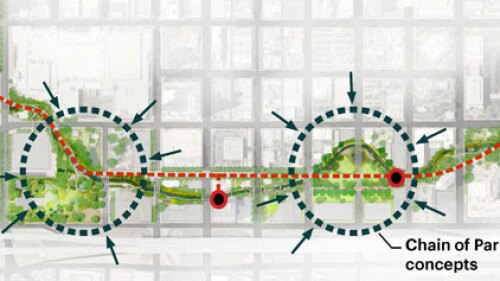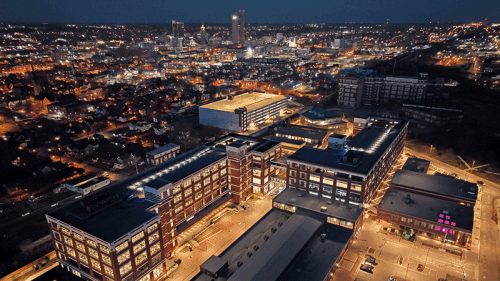Responsible Property Investment
Nature and water are often “hidden” in certain parts of cities, within confined structures or swamp ecosystems. The March ULI InfraXchange featured Michael Van Valkenburg Associate-led project Waterloo Greenway Waller Creek in Austin, Henning Larsen’s project with Jurong Lakeside Garden in Singapore, and ULI Philadelphia’s North Broad Renaissance Initiative, a ULI Curtis Infrastructure TAP project.
The ULI Foundation has announced that Alex J. Rose, executive vice president for Continental Development Corporation, has donated $1 million to support ULI’s Advisory Services program, which offers expertise and technical assistance to communities facing complex land use challenges. This gift is a contribution to the ULI Foundation’s first capital campaign, Our Cities, Our Future, which aims to raise $100 million in support of the Institute’s global mission.
In a report that emphasized upward mobility and inclusion in Indiana’s second largest city, a ULI Advisory Services panel for the Electric Works redevelopment project in Fort Wayne, Indiana, focused on the economic importance of being a destination with an “open tent.” That means having real and stated plans that emphasize the inclusion of the entire region.
City planners across North Carolina’s rural, suburban, and urban environments assert that a vibrant walkable downtown is their goal. They’re aiming to put that value into practice using a broad range of transportation options with help from the funding in the 2022 Bipartisan Infrastructure Law.
Peter Bedford of Napa, California, a ULI Trustee, Foundation Governor, Executive Committee member, and leader of the Institute and industry, passed away in early January. Since joining ULI in 1980, Bedford was active in all aspects of the Institute and was generous with his time and resources.
ULI Greenprint has announced that its membership has grown to include more than 70 private companies, demonstrating the real estate industry’s momentum toward and commitment to decarbonization. Through measurement, benchmarking, knowledge sharing, and implementation of best practices, ULI Greenprint members strive to reduce greenhouse gas emissions by 50 percent by 2030 and achieve net zero carbon emissions by 2050 for buildings under operational control.
Real-time virtual models of objects, ranging from a building to an entire city, are an emerging concept that has the potential to transform the built environment and the real estate industry in numerous ways, according to the technology’s proponents.
Despite potential storm clouds ahead, survey results from the Emerging Trends in Real Estate ® United States and Canada 2022report show strong optimism.
Mohamed A. El-Erian, chief economic adviser at Allianz, warns of the danger of significant inflation and calls for a more comprehensive policy approach that speaks to both the supply and demand sides of the economy.
As part of the 2021 ULI Virtual Europe Conference in February, high-level ULI members from across the global finance and investment sector gathered virtually to discuss capital flows, real estate market dynamics, and debt and equity markets. Among the trends discussed were an acceleration of deglobalization, shifting from “just in time” to “just in case” deliveries, and more interest in the hyperlocal, also characterized as “love thy neighborhood.”




